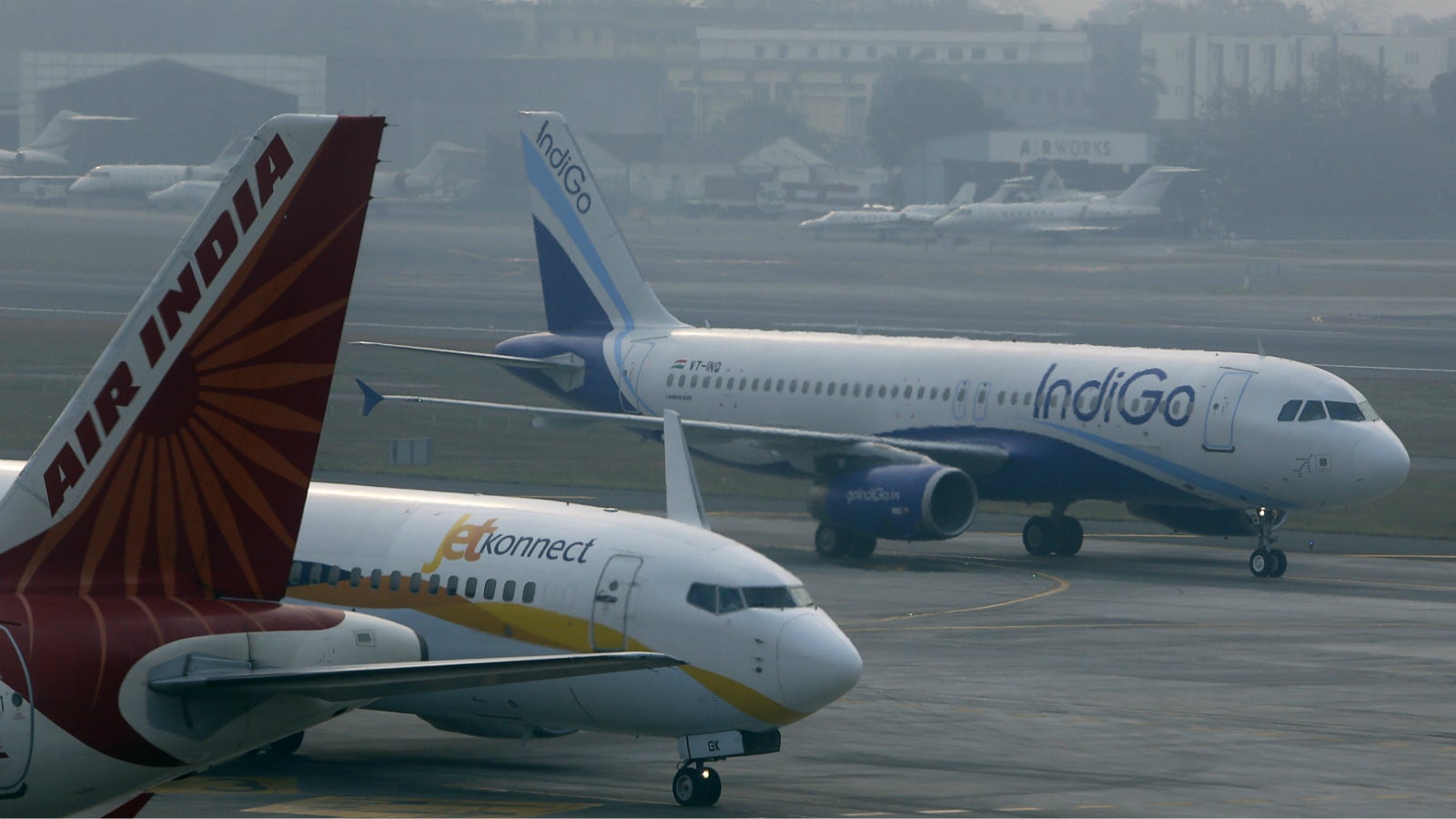For Indian aviation, falling crude leads to clearer skies
For years now, much of India’s aviation sector has been stuck in a rut.


For years now, much of India’s aviation sector has been stuck in a rut.
Except IndiGo, India’s biggest airline by market share, and Mumbai-based Go Air, almost every other carrier in Asia’s third-largest economy had been bleeding. Over the past six years, at least two airlines—Kingfisher and Paramount—went bust, and SpiceJet almost shut shop.
Since 2011, none of the two publicly traded airlines—SpiceJet and Jet Airways—had made annual profits. Air India, the government-owned airline, is also in deep losses.
But 2016 could see a turnaround.
Since the start of the current financial year, three of India’s biggest airlines—SpiceJet, IndiGo and Jet Airways—have posted profits quarter-after-quarter. These three airlines control more than 70% of the country’s civil aviation market. In addition, Air India has about 17% market share, followed by others, including Air Asia, Vistara, and Air Costa.
“In a way, this is a sort of turnaround that we are seeing in the civil aviation sector after a few years of pain,” Mahantesh Sabarad, deputy vice-president at brokerage SBICAP Securities, told Quartz. “Some of the airlines have been making profits for the past few quarters, so it is certainly a turnaround.”
Although much of the improvement has to do with plummeting crude oil prices and, in turn, operating costs, the change in atmosphere could bring back moment, which had long been missing in the world’s ninth-largest aviation market.
Crude oil accounts for about 50% of the operational cost of airlines in India. In 2015, price of the benchmark Brent crude oil fell by 35%. This followed a 48.3% slide in 2014. The timing of this fall provides a massive opportunity for airlines to penetrate a market where only about 2% of the population takes to flying.
“India’s penetration of 0.08 annual domestic seats per capita is low relative to other developing markets like Brazil, Turkey, Indonesia and China, where penetration rates are between 0.35 and 0.65 annual seats per capita,” a report by ICICI Direct said last month. “Hence, we expect strong growth in penetration of air travel over the next decade, which will be mainly driven by sustained growth of per capita income, increased affordability accorded by healthy competition and potential upgrading by the vast user base of Indian Railways.”
The number of airline passengers in India grew at a compounded annual rate of 9% between 2010 and 2015, from 45.4 million passengers to nearly 70 million in 2015. Airbus, the world’s second-biggest aircraft maker, predicts that India will be one of the fastest growing airline markets between 2011 and 2031, with an annual growth rate of 9.5%.
The Indian government has also thrown its weight behind the sector and plans to bring in some much-needed reforms. In October, last year, the government proposed a set of measures aimed at lowering the cost of flying within India, besides an easier rule for airlines wanting to fly to global destinations.